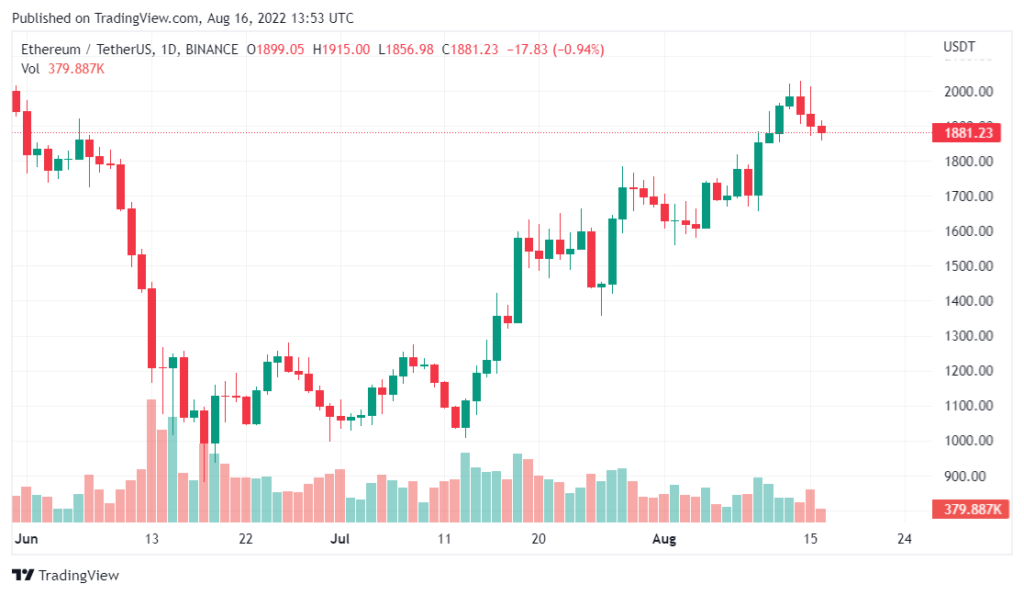Lido Finance, largest crypto staking provider, announced its staked Ether (stETH) expansion plans across the ecosystem of Ethereum layer 2 networks.
Crypto staking provider, Lido Finance, is constantly pushing its effort to establish a stable and secured layer-2 network on the Ethereum blockchain. On 12 August, Lido group revealed its plans of L2 expansion and added technical functionalities to its recent L2 announcement.

Lido aims to expand as a widely usable liquid staking asset platform as possible. Layer 2 expansions are the obvious activity magnets for Ethereum’s price surge, so it makes sense to have Lido tokens available across rapidly developing L2 infrastructure. An effective case would be allowing ETH staking from L2s, the first step is to allow token bridging.
LIDO Finance’s First Launches Game Plan
Lido had already partnered with two popular bridged staking services Argent and Aztec. In this recent announcement, Lido picked two popular L2 networks for the first launches – Arbitrum and Optimism. Lido chose these two networks based on many parameters, including DeFi activity, the TVL, network security track, technological difficulty of bridging assets, and the presence of Lido’s previous partners on the layer 2 network. Let’s take a quick look at the recent upgrades of Lido’s L2 expansion.
- Lido will offer wstETH bridging, as bridges are not compatible with stETH as it rebases out of the box.
- Lido picked Arbitrum and Optimism to bridge its native Lido tokens conveniently.
- Building an upgradable and optimistic structure to allow building L2-ETH staking in the future.
- Lido will use Governance Decision Bridging smart contract to run L2 gov decisions made on existing L1, and not lean on multisig for those.
- To make the operation simple, dev team multisig has the authority to enable L1 deposits. The proposed launch process is:
- Establishing a Snapshot vote by enabling the wstETH bridging.
- Merging the “L1 deposits enabler” role from dev team multisig.
- Run all the checks carefully, and on a positive signal from the checks— it’s launched
- The L1 and L2 bridging rights belong to Aragon Agent contract.
- Emergency Braking Multisigs have the rights for disabling withdrawals and deposits in case of an emergency.
Lido said, “We’re looking to enabling bridging, so we will be starting the snapshot vote on the matter once the public audit for the Governance Bridging contracts is available. Please note, that upon deployment the Lido dev team multi-sig has the role to halt deposits on L1 side. If the snapshot passes, the dev team multi-sig will enable bridging & renounce admin role on the bridge contracts.”
An Innovative Way For Investors
The first step of Lido’s L2 expansion is simply bridging Ethereum staking derivatives on Arbitrum and Optimism networks, while carefully following the existing properties of Lido’s yield-bearing tokens. Due to the rebasing nature of stETH, bridging this derivative to other networks makes the process a whole level of difficulty. Therefore, it has been decided to proceed with the wrapped version of stETH, namely wstETH.

According to Lido, “It’s possible that stETH:ETH exchange rates may be slightly shallower and more volatile in specific markets in the short term.”
However, these upgrades to Lido’s Ethereum layer-2 expansion will ultimately boost traders and investors to join the network on a positive note. Through these steps from Lido, we expect Ethereum’s price will surge soon. However, for now, both Arbitrum and Optimism bridges have been activated in the paused mode, which means deposits and withdrawals are not available at the moment.























